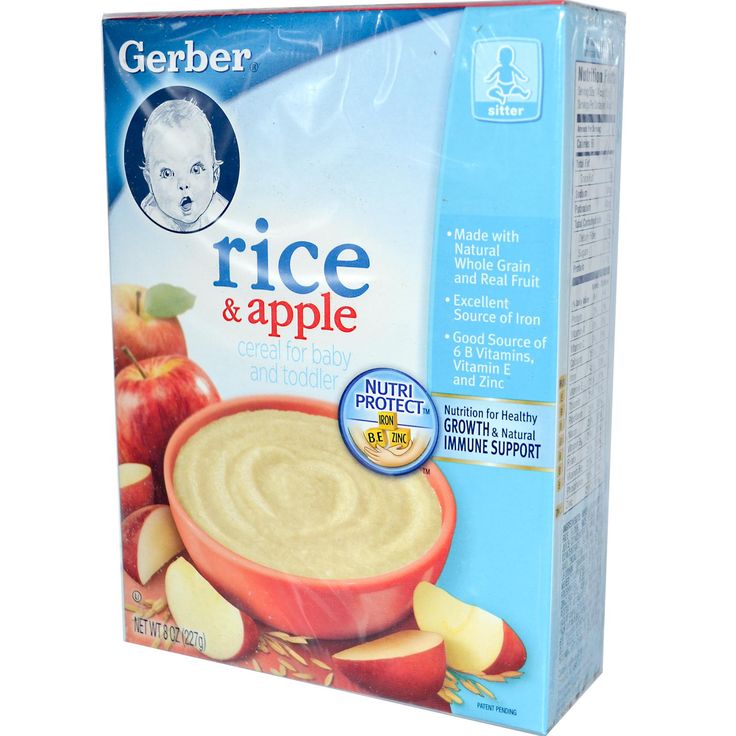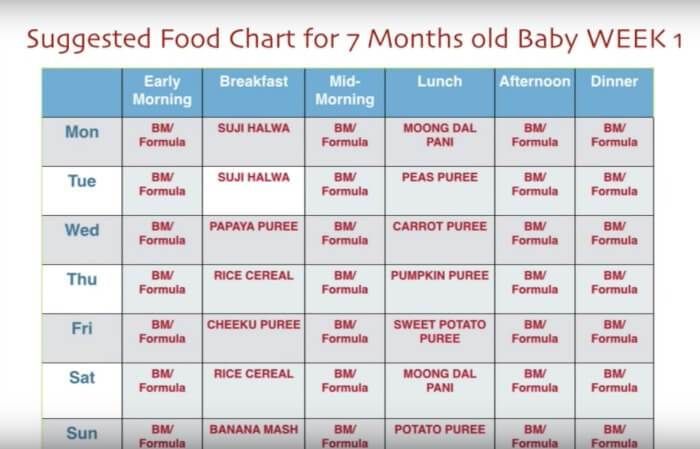When can baby raccoons eat solid food
What Do Baby Raccoons Eat?
So you finally have your pet raccoon. You are now ready to start your adventure of raising a baby raccoon. So as you arrive home with your new pet, eager to take care of him, this is the first question you need to answer: What do baby raccoons eat?
If you wanted a head start on your relationship, you probably bought a raccoon that is still on the bottle, which means a very young raccoon. Purchasing a raccoon that is still on the bottle is necessary for the bonding process. But taking care of these critters is in itself a challenging and demanding task. You need to establish a friendly relationship with the animal from an early age. Such an approach will prove beneficial in the long run and you will experience fewer problems with your pet.
What To Feed Baby RaccoonsThis is your first encounter with the demanding task of having a pet raccoon. The question, “what do baby raccoons eat”, is quite simple: powdered milk with high fat content. Just keep in mind this important information — never feed your little raccoon whole milk.
If the food your new pet requires is quite simple, the how and when of feeding are a different story.
For about the first seven weeks of life, you need to feed the baby raccoon up to five times a day. To feed him at regular intervals, you will even need to wake up during the night and respond to his pleas for food.
How much food do baby raccoons eat? While they are nursing, they may easily overfeed. You must give your raccoon just enough to feel that his belly is full. Do not wait until he starts to refuse the milk because this is a sign that he has already had too much.
After each feeding you should burp the raccoon, and at the same time, using a cotton ball soaked in warm water, massage the genital area to help him relieve himself.
The first few weeks will definitely be an amazingly busy time for you and your new pet raccoon. But after the first few weeks, the baby raccoon will be ready to get into some solid foods.
Weaning a raccoon is not difficult, though some individuals may be harder to bottle-break than others.
When you see that your pet is big enough, usually around the seventh or eighth week, you can start to introduce some of the foods raccoons will eat as an adult.
After the bottle, your raccoon will begin to show his omnivorous side, and he can start to eat almost any kind of food. Even so, you should introduce the food gradually. You might, for instance, add baby cereal to the milk or give him a soft food like fruit that he is able to chew.
What Do Baby Raccoons Eat After WeaningAfter your baby raccoon has been weaned, the task of feeding the animal will still be demanding. It may be easier than bottle-feeding, but controlling your pet’s diet will always be your responsibility.
Raccoons living in the wild can eat practically anything, and their diets are pretty variable.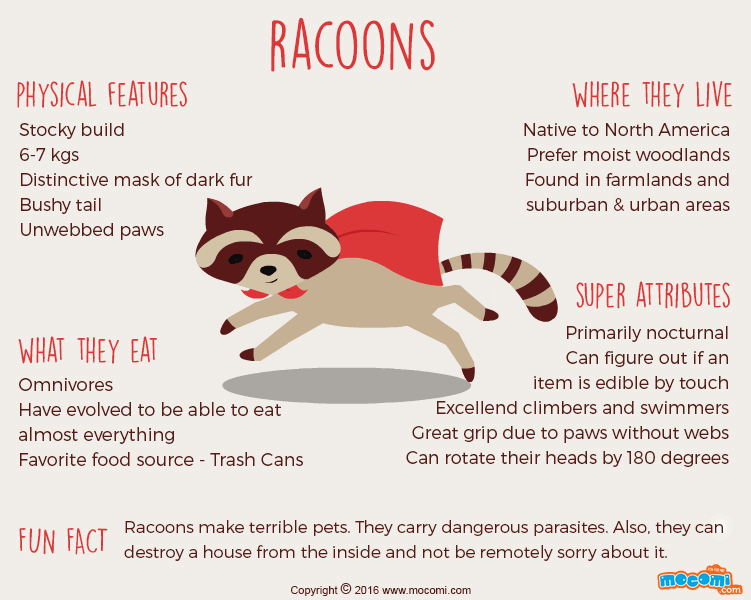 The wild raccoon diet depends on the animal’s personal instincts and the different seasons and habitats he is dealing with. In contrast, a pet raccoon cannot make his own decisions about food. He is completely dependent on you.
The wild raccoon diet depends on the animal’s personal instincts and the different seasons and habitats he is dealing with. In contrast, a pet raccoon cannot make his own decisions about food. He is completely dependent on you.
You cannot treat your raccoon like a dog or a cat; it is not that simple. These common pets can survive on canned food, but not your pet raccoon. He may love cat or dog food in the can, but feeding him only that is not healthy for the animal. Make sure to give your pet a variety of food items daily and to choose the healthiest ones.
What Do Baby Raccoons Eat?
As an Amazon Associate I earn from qualifying purchases.
Raccoons, like most other mammals, are excellent parents. They care for their young with diligence. When raccoon babies are born, the adult female raccoons leave the nest to forage for food to help them produce enough milk to feed their young. The babies are able to leave the nest after approximately 12 weeks of nursing. They’ll learn how to forage for food and where to search from their mother during this time.
They’ll learn how to forage for food and where to search from their mother during this time.
After nine months, baby raccoons are totally dependent on their mother for survival. The mother raccoons produce up to nine pups. She will only have two remaining after nine months, and she will look for a new partner in the winter to start another litter.
If you’re thinking about keeping a raccoon as a pet, you should be prepared to begin. So, when you get home with your new raccoon and are eager to care for him, the first thing you need to consider is: what does a newborn raccoon eat?
What do Ladybugs Eat?
Please enable JavaScript
What do Ladybugs Eat?
What Do Baby Raccoons Eat? A Baby RaccoonRaccoons are omnivores and will consume whatever they can get their hands on. However, baby raccoons are entirely reliant on their moms’ milk. To be able to produce a sufficient amount of milk, she regularly goes out to forage for food.
Baby raccoons are blind and mute for the first three weeks following birth, but they develop quickly. The baby raccoon will consume his or her mother’s milk until it is old enough to leave the nest during this time.
Raccoons make their nests in hollow trees or attics to keep their young safe. Coyotes are one of the most dangerous predators for baby raccoons. The youngsters will continue to reside with their mother throughout the first winter, at which time they will gradually depart.
It is not easy for a raccoon mom to raise their kid. While they generally feed their young on milk, they must be fed at all times. Raccoon mother raccoons feed their young every four hours, which implies they have to feed them five times a day on average. The mother raccoon spends the bulk of her time in the nest caring for her kids. The female has an obligation to nurture her young, and she accomplishes this on her own.
The newborn raccoons are ready to begin eating solid food after around six weeks. They’re introduced to insects, nuts, fish, berries, and frogs while they follow their mother and learn how to find food. Raccoons are very adaptable animals, and after a few more weeks, they will slowly start going their way and will be less dependent on their mother.
They’re introduced to insects, nuts, fish, berries, and frogs while they follow their mother and learn how to find food. Raccoons are very adaptable animals, and after a few more weeks, they will slowly start going their way and will be less dependent on their mother.
If you’re new to the challenging job of raising a raccoon, this guide will get you up to speed on what baby raccoons eat. It’s easy to ask and understand what baby raccoons eat. powdered milk with high-fat content is fine. Remember, if you want your little raccoon to grow up healthy, never try to feed whole milk to it.
You must feed a newborn raccoon up to five times a day for the first seven weeks of his life. To feed him at regular intervals, you’ll have to get out of bed during the night and respond to his demands for food.
What exactly do baby raccoons eat? They may easily overeat while they are nursing. Just enough should be given to your raccoon so that he feels satisfied. Wait until he begins to refuse the milk before offering him any more.
Just enough should be given to your raccoon so that he feels satisfied. Wait until he begins to refuse the milk before offering him any more.
Massage the genital region after each feeding, and burp the raccoon at the same time. To assist it to relieve itself, use a cotton ball soaked in warm water to massage the area around his genitals.
You and your new pet raccoon will have an exciting few weeks early on. However, the newborn raccoon will be ready to start eating solid foods after the first few weeks.
WHAT DO BABY RACCOONS EAT APART FROM BOTTLED MILK?It’s not difficult to wean a raccoon, although certain individuals may be more difficult to bottle-break than others. When your pet reaches the seventh or eighth week of age, you can start offering some of the adult raccoon’s meals.
After they’re done playing with the bottle, your raccoon will show his omnivorous side and may start to consume almost anything. Even so, you should gradually introduce the food. You could, for example, add baby cereal to the milk or offer him a soft meal like fruit that he can chew on.
You could, for example, add baby cereal to the milk or offer him a soft meal like fruit that he can chew on.
It will still be difficult to feed your raccoon after the weaning period. It may be simpler than bottle-feeding, but you will always have to maintain an eye on your pet’s diet.
Raccoons can eat just about anything in the wild, and their diet is quite varied. The raccoon’s wild food is determined by his natural instincts and the various seasons and habitats he encounters. In contrast, a pet raccoon has no choice but to follow your instructions. It is entirely reliant on you for its nutrition.
It’s difficult to compare your raccoon to a dog or a cat. It is not that simple. Although canned food can sustain these typical pets, it will not support your pet raccoon. It may consume cat or dog food in a can, however only giving him that isn’t good for his health.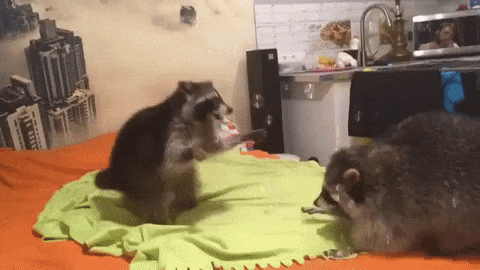 Make certain to provide your baby raccoon with a variety of meals items on a daily basis and select the finest ones.
Make certain to provide your baby raccoon with a variety of meals items on a daily basis and select the finest ones.
Baby Raccoons will eat just about anything you put in front of them, and they can eat a lot. You may select from among a wide range of edibles. Fresh vegetables, uncooked corn on the cob, fish, fruit, poultry, grain-free dog food, and eggs are some popular pet raccoon staples.
Fruits and Vegetables for Baby RaccoonsYou must also satisfy his predatory instincts and offer mice, minnows, or insects to him from time to time. If at all feasible, don’t make these goodies readily available to your raccoon. Place them in a plastic container, hide them, or release the minnows into a basin of water if possible. Raccoons like exploring and competitions, which means finding a method to get the food keeps them occupied. As a consequence, your raccoon will be more cheerful, less bored, and less destructive within your home.
How To Feed Baby Raccoons? A Baby Raccoon in The WildIf you come across an abandoned baby raccoon and believe he is orphaned, you may need to care for him.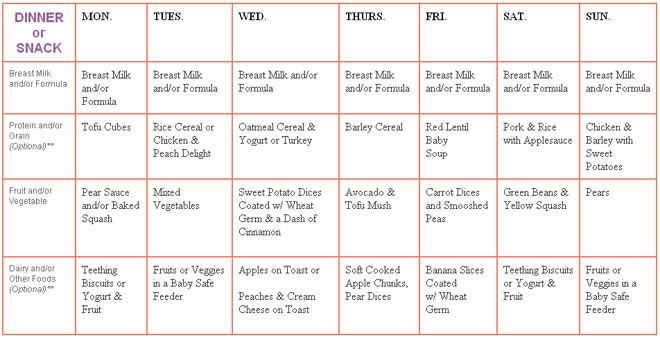 After it’s moved to a new location or lost, you’ll need to get him warm and hydrated, then feed him with a milk replacement solution. Baby raccoons can be poisonous and carry germs, so handle them carefully and wear gloves.
After it’s moved to a new location or lost, you’ll need to get him warm and hydrated, then feed him with a milk replacement solution. Baby raccoons can be poisonous and carry germs, so handle them carefully and wear gloves.
Make sure it’s not too cold. A baby raccoon can’t stomach food until it’s at the right temperature. If your baby raccoon has been out in the cold, he’ll need to be warmed up before eating. Warming him with a soft blanket and a hot water bottle is sufficient until he feels warm to the touch.
Step 2:By pinching the baby raccoon’s skin, check for dehydration. When you pinch the skin, or if the eyes are sunken, it may be severely dehydrated and should be taken to a veterinarian immediately. If it appears only slightly dehydrated, offer him a rehydration solution (also known as Pedialyte) right away.
Step 3:Choose how much to feed it. The quantity you offer your infant raccoon will be determined by its weight, so you’ll need to weigh it first in grams.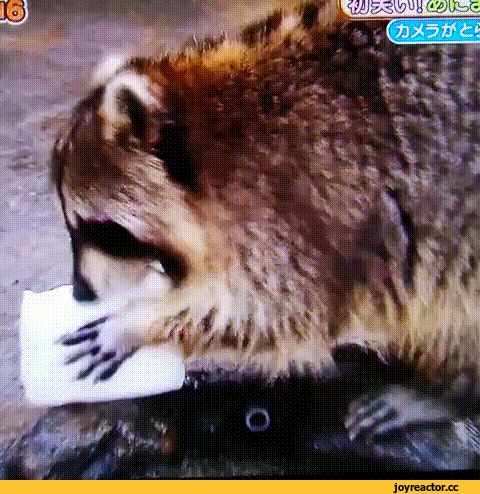 Plan to give it 5% of its body weight in milliliters at each feeding after you’ve measured its weight.
Plan to give it 5% of its body weight in milliliters at each feeding after you’ve measured its weight.
It’s best to feed it with an eyedropper. It will most likely be best if you feed your baby raccoon with an eyedropper at first since you can regulate the amount of fluid he receives. Express the milk gradually into its mouth while holding it on its belly or slightly upright. It’s normal for the baby raccoon to struggle with the eyedropper at first. You may need to squeeze your hand around its muzzle in order for it to maintain a grip on the dropper.
Step 5:Put it in a bottle. You may be able to transition from feeding with an eyedropper to feeding with a pet bottle after you’ve mastered the technique. These are readily available at most pet retailers. Lay the raccoon facedown or slightly upright, as with the eyedropper. Massage the raccoon’s back from his neck to his tail base to encourage a purring response and stimulate sucking by inserting the nipple of the bottle into his mouth.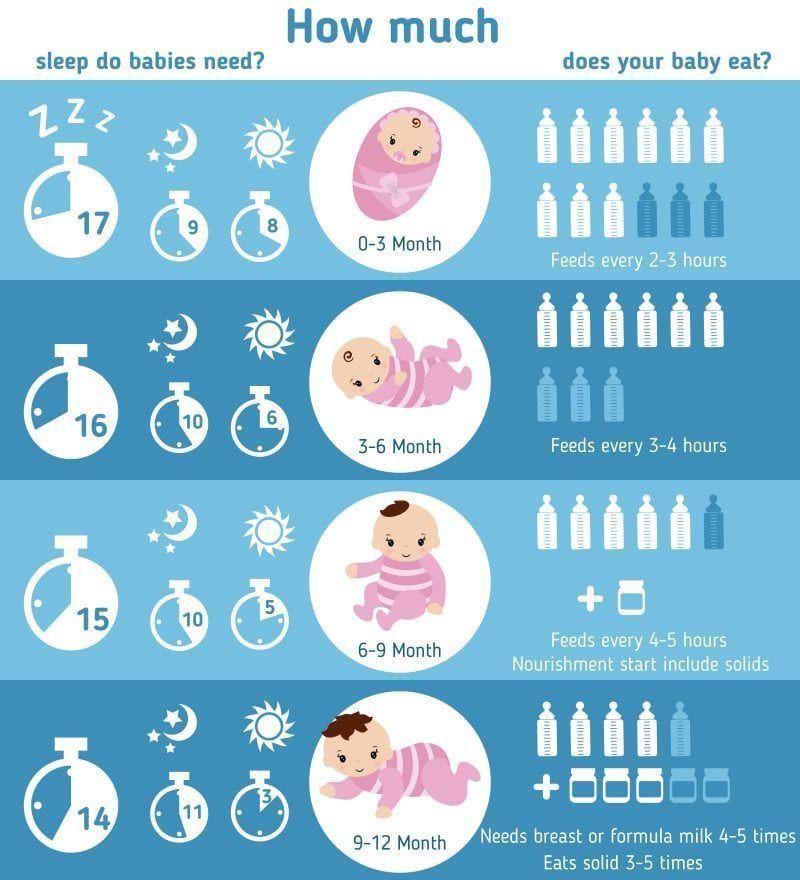
Waste removal should be stimulated. This step is critical to your baby raccoon’s survival. Mother raccoons frequently stimulate their young to urinate and defecate by licking them. As a surrogate raccoon mother, you’ll need to massage the raccoon’s feces with a warm washcloth or a feather. This must be done before and after each feeding until the baby raccoon is able to discharge waste on its own.
Step 7:Mix the two together. When your baby raccoon’s teeth begin to grow, you’ll need to start including solid foods in its diet. Begin by combining a bit of crushed kitten food with its formula. Feeding canned eggs, soft fruits, and oatmeal soon thereafter is a good idea (just make sure they’re real).
What Are The Natural Predators of Baby Raccoons?The northern raccoon is a species of mammal that has black masks and lives throughout North America. They are predators and scavengers, and their grizzled black, gray, or brown fur allows them to blend in with their surroundings. They are most recognizable for their dark masks.
They are most recognizable for their dark masks.
Coyotes
Coyotes are powerful and versatile hunters, capable of consuming anything from large prey to rubbish. They will consume raccoons, both adult and juvenile alike. Coyotes hunt in packs, but one coyote is enough to kill a single raccoon.
Owls
Great horned owls, according to the Michigan Natural History website, are big birds that range in length from 18 to 25 inches and have wingspans of 48 to 60 inches. Despite the fact that their diet generally consists of little mice and rats, cats will consume larger animals including opossums, raccoons, and skunks. While they typically avoid eating adult raccoons, they have been known to kill and consume them.
Foxes
Foxes, like raccoons, compete for the same food sources and live in similar climates. If given the opportunity, foxes will devour small, young raccoons. Fox urine is effective as a raccoon repellent. Foxes are high-level predators that prey on a variety of species including rabbits and snakes.
Wolves
Wolves are predators that subsist on meat, and though they do a lot of scavenging, they are also good hunters. To bring down a large beast species, wolves will hunt in packs, but a solitary wolf can easily kill a raccoon. Wolves prey on raccoons as well as other rodents such as shrews and hares.
Large Cats
Raccoons are hunted by a variety of predators, including lynx, cougars, and pumas. If they have the opportunity, these huge predators assist to control the raccoon population. They can consume both juvenile and adult raccoons.
Humans
Raccoons are hunted for their fur and because they are considered pests. Raccoons will prey on chickens, which can lead to the spread of rabies. People will hunt raccoons using dogs and guns, capture them in traps or poison them. Some people will go after raccoons for food; however, others do it for the sake of competition.
How To Protect Baby Raccoons From Predators?Experienced raccoon parents build insulated and well-hidden dens, such as abandoned burrows of other animals or hollowed tree trunks, to avoid predators. Raccoons are able to get into areas that other animals cannot because of their hand movement and dexterity, which they use to pick up things in their environment and access places that would otherwise be inaccessible to other creatures.
Raccoons are able to get into areas that other animals cannot because of their hand movement and dexterity, which they use to pick up things in their environment and access places that would otherwise be inaccessible to other creatures.
Infrequently maintained places, such as attics, barns, deck spaces, and basements, provide excellent security from virtually all dangers.
Amazon and the Amazon logo are trademarks of Amazon.com, Inc, or its affiliates.
What do raccoons eat in a domestic or wild environment, what to feed a raccoon
Content of the article:
- 1 Feeding infants
- 2 What do adult raccoons eat?
- 2.1 Dependence of appetite on the season of the year
- 2.1.1 What should be done in parallel with feeding?
- 2.2 A bit about wild raccoons
- 2.1 Dependence of appetite on the season of the year
The raccoon family belongs to the genus of mammalian predators. These animals gravitate towards hunting and forceful conflict resolution. In order to adequately join the food chain of the Earth's biosphere, nature endowed raccoons with a "bad" character, sharp claws and fangs. Having acquired a cute and charming rogue in a mask, a lot of questions arise, the first of which is how to feed a domestic raccoon. I propose to talk about this topic, and also touch on the question of what you need to know about raccoons, in general.
In order to adequately join the food chain of the Earth's biosphere, nature endowed raccoons with a "bad" character, sharp claws and fangs. Having acquired a cute and charming rogue in a mask, a lot of questions arise, the first of which is how to feed a domestic raccoon. I propose to talk about this topic, and also touch on the question of what you need to know about raccoons, in general.
Feeding babies
The sooner you start accustoming a raccoon to your company, the more affectionate and kind this slicker will be when he becomes an adult. Of course, in everything you need to know the measure. For example, bailing a recently born baby, there is almost a 100% chance that the baby will die. There is a raccoon, there is no raccoon.
If the owner of the raccoon is experienced and knows how to feed the raccoon at home and how to care for him, then you can try to take a baby 1 month old. Caring for such small raccoons is fraught with many difficulties. Next to the crumbs you need to be inseparable, he wakes up every few hours and requires feeding and care.
The best option for a small raccoon is a 1.5-month-old rogue. His body is already considered to be more or less strong and he is able to master the man-made food for the raccoon.
What do little raccoons eat? - Milk mixtures. Food is poured into a baby bottle with a nipple (sold in any pharmacy). If a monthly raccoon is nursed, then it is better to feed the baby with an ordinary pipette.
Cow or goat milk is used as milk mixtures. The product is diluted with a small amount of warm water. You can sweeten the mixture with sugar. In addition, high-quality condensed milk (condensed milk must be diluted) or dairy products for feeding cats can be used.
Material on the topic: How many raccoons are born from one female?
From the age of 1.5 months, the baby raccoon begins to taste solid food. Grated banana, cottage cheese and quail egg are added to the milk mixture.
At the age of 2.5 months, a little raccoon can already eat from a bowl. From the age of 3 months, he himself begins to understand what domestic raccoons eat, what is good for him and what is not.
What do adult raccoons eat?
Adult raccoons are omnivores. Having reached puberty, the raccoon begins to show its true essence, the essence of a carnivorous hunter.
It is obligatory and absolutely necessary to include in the diet of a raccoon:
- Poultry
- Meat (beef/pork)
- Fish (any other than red fillets)
Food of animal origin is of particular interest to raccoons in spring and summer. They can eat rarely if the food is rich in fats, proteins and carbohydrates.
What else to feed a raccoon besides meat products? – In addition to food of animal origin, raccoons lean on berries, fruits, vegetables and nuts:
- Apples/pears/plums/apricots
- Strawberry/gooseberry/mulberry/grape
- Pumpkin/squash/melons
- Hazelnut/almond/walnut/pistachio
- Various cereals (buckwheat, rice, etc.
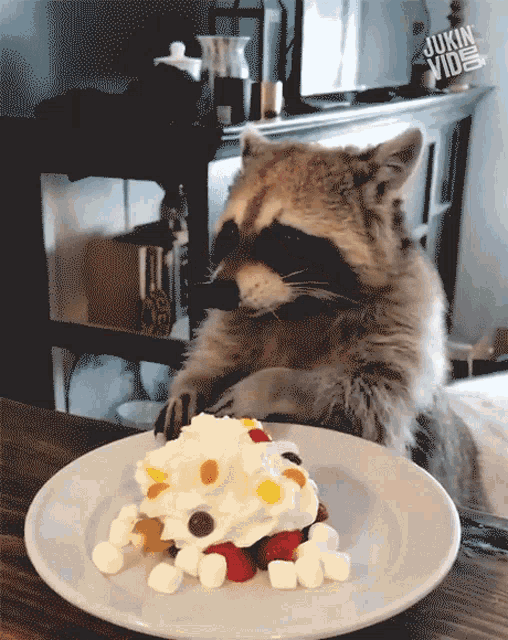 )
)
If you have a raccoon gargle, what to feed this slicker questions should not arise.
In order not to spend money on fruits during the winter, you can prepare dried fruits according to the season. Raccoons love prunes, dried apricots and raisins. That is, you can get a dryer for fruit and prepare the necessary amount of feed during the harvest. Dried fruits are vacuumized and transferred to the refrigerator for storage. If you are faced with the question of what to feed a domestic raccoon, you can prepare 15-20 (kg) dried fruits without straining during the period of summer and autumn, which is enough for raccoons for the whole winter and spring.
Material on the topic: A raccoon as a totem animal
Dependence of appetite on the season of the year
Taste preferences of raccoons directly depend on the period of the year. As practice shows, during the warm period of the year (especially in summer), raccoons have a weak appetite. Many raccoons seriously lose weight. If you notice that the pet is very thin, then do not be afraid. Appetite comes to raccoons from early autumn. From this period, raccoons rapidly gain weight. It is from autumn that you need to seriously think about how to feed a raccoon at home.
Many raccoons seriously lose weight. If you notice that the pet is very thin, then do not be afraid. Appetite comes to raccoons from early autumn. From this period, raccoons rapidly gain weight. It is from autumn that you need to seriously think about how to feed a raccoon at home.
As a rule, in the autumn raccoons lean on vegetables and nuts, alternating a vegetarian meal with food of animal origin. For example, wild raccoons like to seriously trim the rodent population. By the way, check out the article, how, when and how much raccoons eat mice .
By winter, the raccoon becomes well-fed. Its rounded forms begin to shine and shimmer in the Sun with shining fur.
What should be done in parallel with feeding?
Little raccoons need to massage the belly area. There are cases when raccoons are not able to go to the potty. The raccoon's tummy can swell, which is why many crumbs die. That is, massage stimulates the passage of undigested waste through the intestines.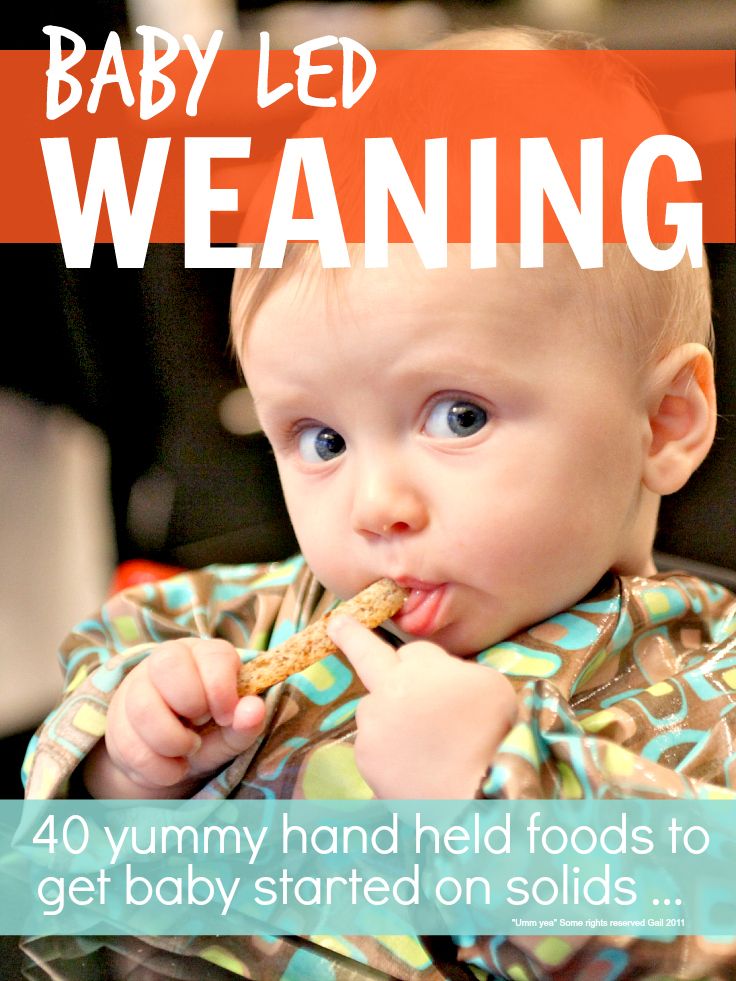
A bit about wild raccoons
The life of savages is fundamentally different from that of domesticated raccoons. Wild raccoons are real opportunists. They are ready to crush, break and kill anyone who can be chewed by their fangs. Feed includes:
- Birds
- Snakes
- Turtles
- Insects
- Fish
- Rodents
Raccoons are accused of the complete extermination of the population of many species of insects. Raccoons are good at cleaning the area from poisonous spiders and snakes. That is why raccoons are artificially introduced in many parts of the world.
Related material: Raccoon habitat
What else do you need to know about raccoons? - Savages go hunting at night, and during the day they sleep off. A raccoon's personal territory is considered to be land within a radius of 1.5 (km) from its abode. Raccoons try not to violate each other's personal space, especially hermits.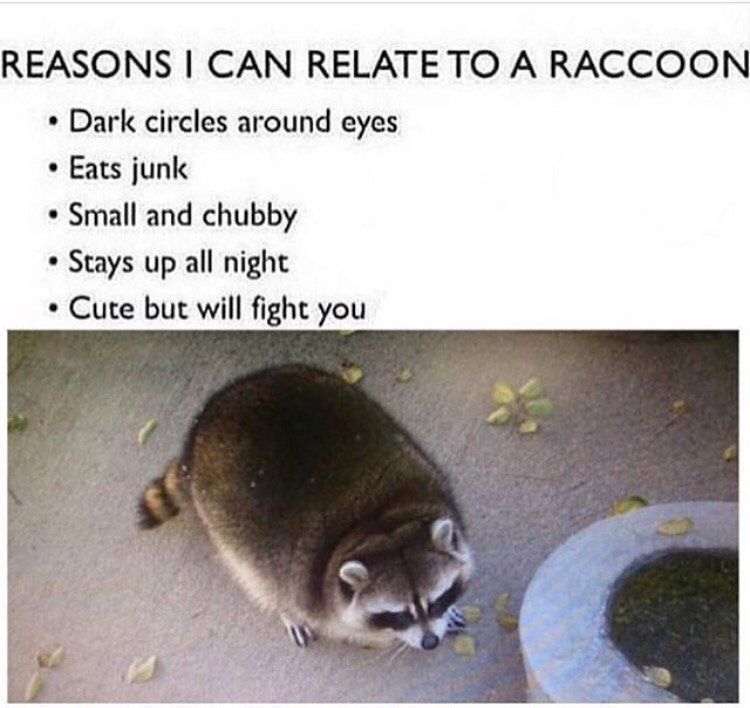
Basically, the raccoon is a nocturnal animal. These animals are excellently oriented in conditions of insufficient visibility. The raccoon sees "by touch". On the paws of raccoons there are special sensors, like whiskers in cats. With the help of these antennas, raccoons make up a picture of the area even in pitch night.
60 interesting facts about raccoons - Here is Raccoon
1. Surely everyone has seen a lot of funny videos with charming animals - raccoons, perhaps one of the cutest predators on earth. But few people know that the historical homeland of the striped raccoon is North America, and initially these animals were found only there.
2. The body length of a raccoon varies from 40 to 60 cm, the healthy weight of an adult raccoon is 7 to 13 kilograms, but in the wild in winter, males can reach 25 kilograms.
3. A raccoon's coat can be from gray-silver to red. Much less common are black raccoons, and a very rare color is white albinos.
4. The raccoon has very sharp teeth, consisting of 3 incisors, 4 canines, 3 and 4 premolars, 2 and 3 molars. The total number of teeth in a raccoon's mouth is 36-42.
The raccoon has very sharp teeth, consisting of 3 incisors, 4 canines, 3 and 4 premolars, 2 and 3 molars. The total number of teeth in a raccoon's mouth is 36-42.
5. When the discoverers landed off the coast of the American continent, raccoons almost immediately won the attention of researchers, because they did not resemble any known animal. For a long time, scientists tried to attribute them to dogs, cats, badgers and even bears! However, after long discussions, a separate family of "raccoons" was created for raccoons, which they still share with coats and kinkajou to this day.
6. Remarkably, research has shown that raccoons are genetically distant relatives of bears and share a common ancestor, the Cephalogale. Just like bears, raccoons are mammals, they are omnivorous predators, they are plantigrade and are able to move perfectly only on two legs, and when walking on four legs, the back of the raccoon is located above the head. Similar are the ways to throw off excess energy, the so-called "bear pitching".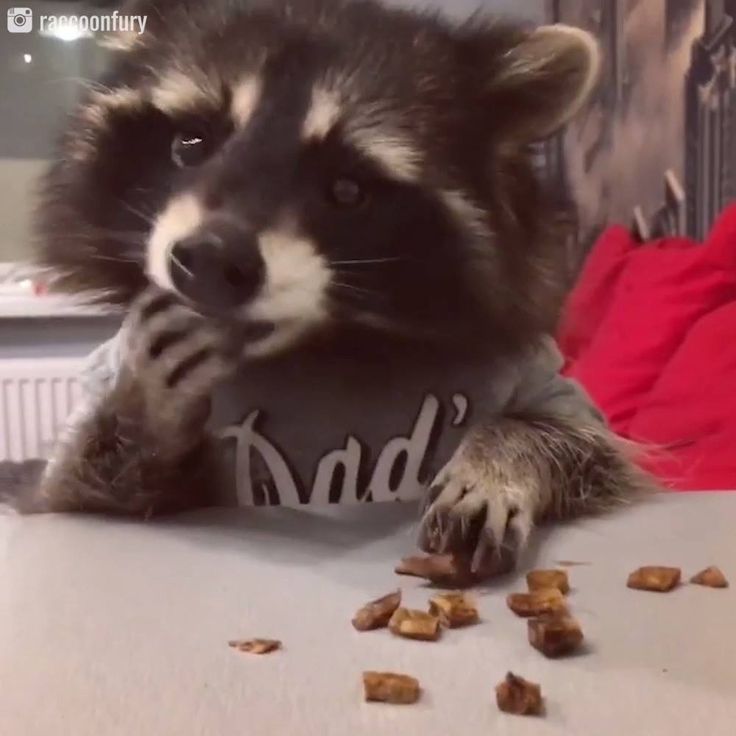
7. Raccoons living in cold regions spend the winter in hibernation. Wintering can reach 4-5 months. Preparation for hibernation begins in the fall - the raccoon stocks up on fat, increasing body weight by 20-30%, and a dense undercoat also appears. In the spring, on the contrary, the animals lose weight and change their fur coat.
8. It's hard to believe, but for the first time raccoons were taken out of their historical homeland only in the 1920s. Having discovered the value of a raccoon coat, scientists from Germany decided to start breeding animals for commercial purposes. So raccoons left their native continent and settled on numerous farms in Germany, where they were actively used in the production of fur products.
9. During the war, a shell fragment hit the wall of a raccoon farm, thanks to which the animals got free and began to actively spread throughout Germany, without encountering any threat from the local fauna. Germany and America are still leaders in the number of raccoons living there.
10. The average life expectancy of a raccoon at home is 15-20 years, and the oldest raccoon died at the age of 31 years. In the wild, life expectancy is much less, 3-5 years. It affects promiscuity in nutrition, and, as a result, diseases. Indefatigable curiosity that makes the animals go where they should not have climbed. One of the main enemies of a raccoon is a car, and, of course, it could not have done without a person - poachers still hunt them.
11. By nature, raccoons are perfectly adapted to life - good eyesight, sharp hearing, able to catch the movement of an earthworm in the forest, agile paws, sharp teeth, sensitive vibrissae located throughout the body, even on the fingers.
12. The raccoon is always fashionable to recognize by the characteristic black mask on the muzzle, which serves to absorb excess light and reduce glare, enhancing visual acuity. It is noteworthy that some American football teams, having peeped this feature in raccoons, make a drawing with black paint near the eyes.
13. Raccoons have very developed fine motor skills, and the front paws are similar to human hands - the phalanges of the fingers ending in a nail, the thumb opposed to the palm, which makes it possible to grip. On the palms, like a human, there are lines and each raccoon has its own unique fingerprint.
14. Raccoons' hind legs deserve special attention. They are able to twist 180 degrees, which allows the animal to descend headfirst from a tree without losing speed.
15. The skin on the paws is very delicate, velvety, sometimes there are even corns on the pads.
16. Raccoons have rather sharp and tenacious claws, slightly curved down, which allows them to climb any surface without any problems.
17. The tail of the raccoon, one of the main symbols of these animals, is very memorable. The length of the tail can reach 25 centimeters. In nature, it is used as an additional support when balancing while moving on its hind legs. Domestic raccoons have shorter tails. A characteristic difference is the black rings encircling the tail. In forest dwellers, the number of rings can reach 10, in domestic animals 5-7.
A characteristic difference is the black rings encircling the tail. In forest dwellers, the number of rings can reach 10, in domestic animals 5-7.
18. To measure a raccoon's blood pressure, veterinarians put a cuff on the tail.
19. Raccoons are very fond of their tails, they try not to wet them, constantly comb out and look after both their own and the tails of their relatives.
20. At home, during seasonal molting, the tail of a raccoon is almost completely capable of losing hair.
21. Raccoons are very clean animals, they always take care of their fur, look after each other, comb out matted undercoat during periods of molting, bite out fleas and other parasites.
22. The raccoon coat is unique and practically does not get dirty, and they do not lick like cats. It is enough to shake off, and the fur coat is again in its original form!
23. Raccoons came to Russia in the 1930s, but, unlike Germany, raccoons were immediately released into our forests. At that time, the animals took root very well in the Krasnodar Territory and the Caucasus. Now, raccoons can be found even in the harsh climate of the Far East. Meet raccoons and we have in the forests of the Leningrad region.
At that time, the animals took root very well in the Krasnodar Territory and the Caucasus. Now, raccoons can be found even in the harsh climate of the Far East. Meet raccoons and we have in the forests of the Leningrad region.
24. Water plays an important role in the life of raccoons. In nature, they prefer to settle near water bodies; raccoons hunt in the water, catching crustaceans, small fish and other inhabitants. Methodically moving their paws along the bottom, they turn over the pebbles and dig up the silt, blindly finding their prey. The already sensitive paws in the water are cleared, become even more susceptible, and the raccoon can easily determine the edibility of the object by touch.
25. Prey caught on land, the raccoon also immediately carries into the water and drowns it so that the victim does not resist and it is easier to eat. Actually, due to the fact that the raccoon spends most of its life rummaging in the water, they were called gargles.
26. Raccoons are naturally good swimmers, but they prefer not to get wet, caressing only their paws, and resort to swimming only in case of escape.
Raccoons are naturally good swimmers, but they prefer not to get wet, caressing only their paws, and resort to swimming only in case of escape.
27. The wool of raccoons consists of 90% of a very thick undercoat, which allows them not to freeze even in very cold water.
28. A raccoon's body temperature is similar to that of a cat, and stays around 38 degrees.
29. A raccoon is a predator by nature, but it is completely omnivorous. The diet consists of rodents, insects, frogs, small snakes. Raccoons destroy bird nests, sometimes threatening rare species of birds. They prefer vegetables, fruits, nuts, berries as a treat, and in difficult natural conditions they are able to eat even cereals.
30. Throughout spring and summer, the raccoon prefers animal food, and from the end of summer until late autumn it switches to vegetable food.
31. A raccoon does not build his own dwelling, he occupies someone else's, already finished, often eating the previous "owners". Therefore, the raccoon can be found in holes, among the roots of tree roots, in hollows and even in bird nests.
Therefore, the raccoon can be found in holes, among the roots of tree roots, in hollows and even in bird nests.
32. It is very easy to recognize a raccoon's dwelling in a tree - the trunk will be profusely scratched, and fluff and hairs can be seen on the bark.
33. Raccoons are very easy to adapt to life in any conditions, but you will definitely not meet them in coniferous forests. There is also little chance of seeing a raccoon in a dry area, with a small number of water bodies. The animals also avoid regions with a harsh climate.
34. Raccoons have a strict matriarchy - the complete dominance of females. The leader is always a female. In nature, females bite off males' mustaches to disorientate them on the ground, pull out their claws, and forbid them to go to the same toilet with them. Yes, and packs, mostly consist only of "girls".
35. Females prefer to settle in one small area, rarely leaving it. Males, on the other hand, often move over long distances, often changing their habitat, especially during the mating season.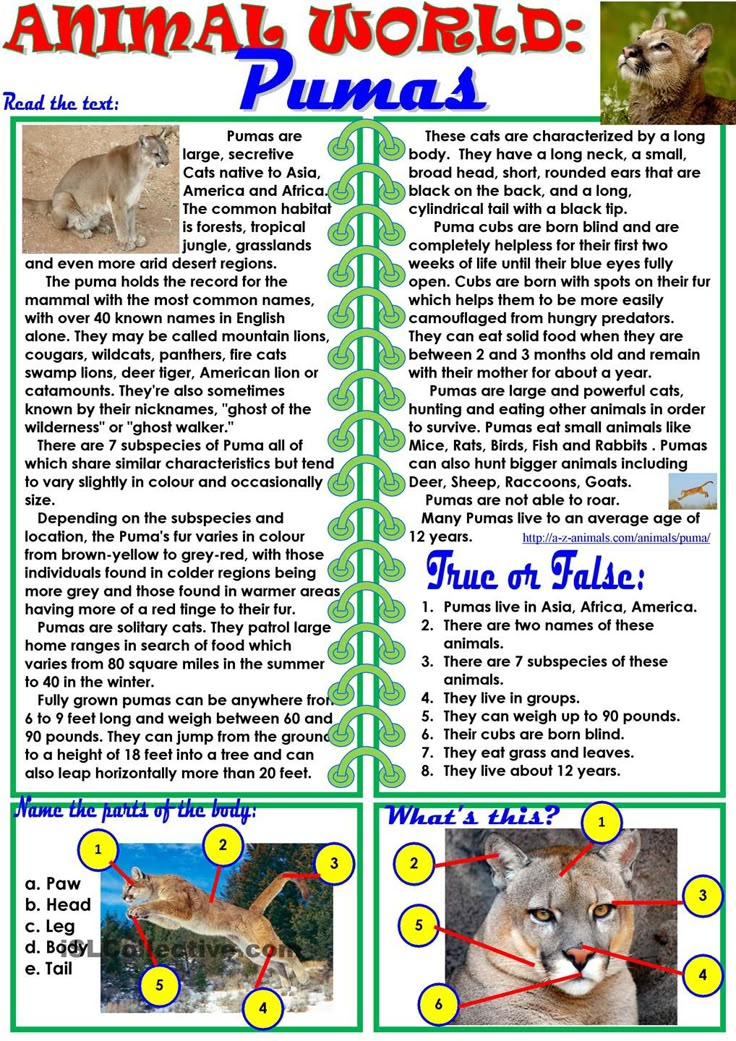
36. The mating season (rut) in raccoons usually occurs once a year from February to April, females mate with one partner, being monogamous, unlike males. The male is able to fertilize several females during the rut.
37. Sexual maturity in males and females occurs at different ages. Females are able to breed as early as one year old, and males only from two years old.
38. When breeding, a female raccoon always prepares several alternative shelters where she takes her babies in case of danger.
39. Pregnancy in raccoons lasts 2 months, from 3 to 8 puppies are born at a time. The cubs are born completely helpless, blind and deaf, weighing about 85 grams, and are under the careful care of their mother. Often, babies become easy prey for owls and other birds of prey.
40. For the first 2 months, the mother feeds her babies with milk until the first milk teeth begin to appear. Then there is the transition to solid food.
41. At the age of 5-6 months, babies begin to live independently, separated from their mother
42. A raccoon is capable of making more than 30 sounds, from a menacing roar like a dog's to a gentle trill like a bird's song. Especially "talkative" raccoon cubs.
A raccoon is capable of making more than 30 sounds, from a menacing roar like a dog's to a gentle trill like a bird's song. Especially "talkative" raccoon cubs.
43. By themselves, raccoons are not conflict animals, rarely fight, prefer to flee. But in the event of an attack, they are able to fight back. Dodgy, attack and bite to choke.
44. Natural enemies of raccoons are bears, wolves, large representatives of the cat family.
45. Escaping from pursuers, a raccoon often pretends to be dead.
46. Raccoons have a well-developed intellect, they are able to make consecutive logical chains of actions to achieve the goal. In a number of tests, raccoons outperformed monkeys and even five-year-old children in terms of the speed of performing logical tasks.
47. Scientists in Germany tried to use raccoons as experimental animals, but quickly abandoned the idea. Too resourceful animals caused a lot of trouble, opening enclosures and in every possible way preventing experiments.
48. Surprisingly, in addition to logical thinking, raccoons have a very good memory, they are able to keep the acquired skills without repetition for 3 years.
49. Raccoons are very easy to learn, so at home they are able to remember and repeat your actions or the skills of their relatives.
50. If you have a raccoon as a pet, remember that it must be brought up in strictness, but in no case should you offend a cute animal - raccoons are very vindictive. It's easy to lose a raccoon's trust, but it can be next to impossible to get it back.
51. Cunning by nature, raccoons gradually began to leave the forests and settle in the vicinity of settlements. This makes it easier to provide for oneself by raiding city dumps, ruining households, begging people for food and eating yard dogs.
52. In America, raccoons are often called "kings of garbage cans" and "trash pandas"
53. In their homeland, raccoons have such a strong immune system that they are able to carry rabies asymptomatically, being more carriers of diseases than rats.

